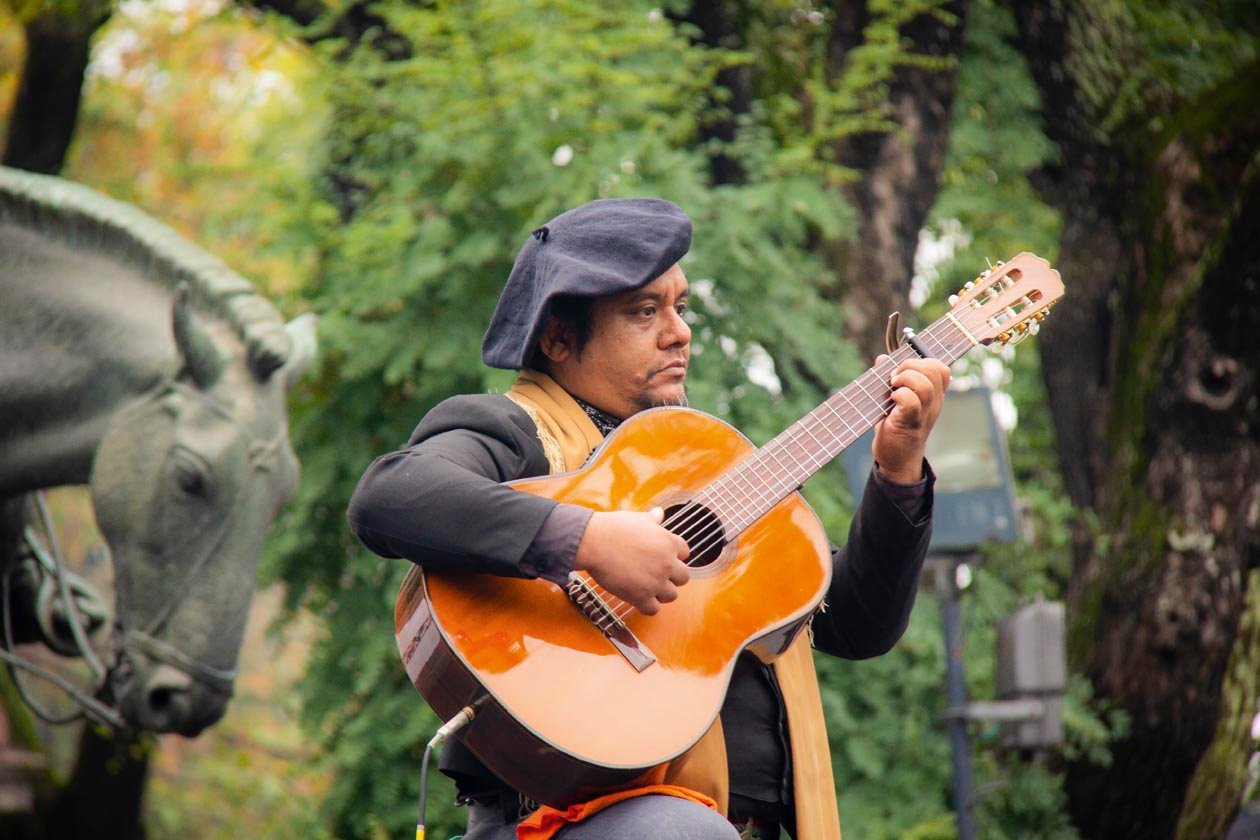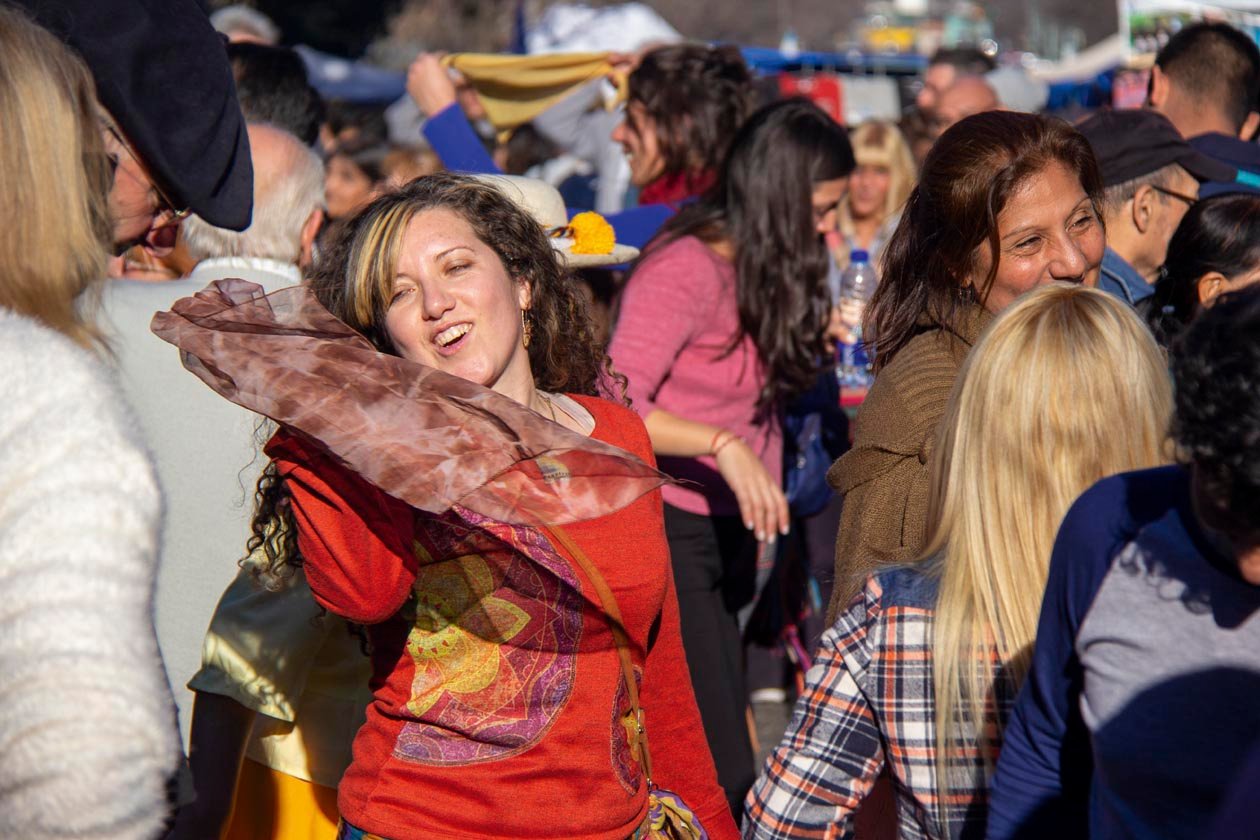
Mataderos Fair: A Tribute to Traditions
By: Julia Henríquez
Photos: Demian Colman
I still remember the first time I visited Mataderos. I had been to other fairs in Buenos Aires, each with a charm all its own and crafts, colors, and creativity that I found fascinating. But as I approached Mataderos Fair, I sensed the experience would be different. Still many feet away from the entrance, music filled the air and the smells of sausage and roasted meats guided us down the path. The mood was festive and, undoubtedly, rural, or gaucho.
And, yes, once you pass the sign announcing the Fair, the city seems light years away and the countryside settles deep into your weekend. The handicrafts arranged on either side of the street create an almost ceremonial path leading into the heart of Argentine traditions. There are wooden carvings, knives, leather engravings, ponchos, and silver goods, most of it celebrating the countryside and the gaucho’s rural lifestyle. It is impossible not to get lost among stands and harder still to hang onto your money here. Even the most cautious suddenly become impulse buyers. I’ve seen it happen.

The Fair was created in 1986 as a permanent venue for showcasing the nation’s cultural roots. It emerged in the midst of the Mataderos neighborhood, home to the city’s slaughterhouses since 1900. All that remains of this history are the butcher shops and businesses selling farm products, but the Pampas traditions are at the heart of the capital’s most gaucho neighborhood.
Paths lined by artisans lead to the central park, presided over by an enormous statue of a gaucho on horseback. El Resero was created by Emilio Sarguinet in 1932 to pay tribute to the nation’s rural inhabitants. To one side is the Recova, where the Mercado Nacional de Hacienda (National Cattle Market) once stood, today a National Historic Landmark. And, on high, the stage. The master of ceremonies is dressed, of course, in the traditional garb of the Argentine countryside, including beret and scarf, and speaks to the audience as if he’s known them forever, proudly introducing each performer. A great variety of up-and-coming artists as well as famous artists –Victor Heredia, for example– have graced the stage at the Fair so it’s worth checking the programming beforehand.

The musical offerings never stop, from eleven o’clock in the morning until dusk. These shows are the heart and soul of the Fair. And just as, on other continents, all roads lead to Rome, all of mine seem to lead to the dancing. This is the perfect place to enjoy a chacarera or an Argentine zamba in person. The music plays and, in the middle of the street, hands rise into the air and handkerchiefs wave. Men line up with the women in a line in front of them. They smile, clap, stomp, and spin. I can’t help giving it a try and am greeted by hats, boots, berets, and long skirts. Everyone clapping and stomping in time.
After noon, hunger strikes and the scent of firewood is enticing. Local gastronomy is yet another facet of this fair, which uses every corner to showcase the Argentina of mate and meat-eaters. But meat is only one of the dishes on offer. Empanadas, humita —a corn-based dish— savory pastries, fried bread, and the very traditional locro soup are a few of the rural favorites.

Regional dishes are also on display among the handicrafts. While in certain stalls you’ll see decorations and handmade clothes, in others you’ll find sausages hanging on the walls and tables overflowing with cheeses, pickled goods, and sausages. And, for the sweet tooth, there is plenty of homemade ice cream, dulce de leche, and jams. And, of course, the wine is noteworthy.
Every corner of the Fair showcases a different province or municipality; every stall promotes, in its own way, cultural production and development. A craftsman once told me that he was an ambassador for his country and this seems especially appropriate here, where thousands of pieces of Argentina’s soul are on display for tourists in every imaginable setting.

For visitors who return over and over again, or those who never tire of learning curious new things, workshops of all kinds are offered in the early hours: weaving, dancing, painting… the workshops vary and are announced every week on social media and between songs on the legendary stage. There is also a demonstration of gaucho skills accompanied by talks, exhibitions, workshops, and video projections.
The Fair, which runs from April to December, shuts down only for extreme weather. Special days, such as Pachamama Day, International Folklore Day, Brazilian Independence, and Argentine national holidays (May 25 and July 9, among others) each have their own particular color and therefore draw larger crowds and feature more intense and dazzling activities.

From January to March, when the days start to warm up and the sun becomes exhausting, the Fair closes to make room for the Kermesse on Saturdays, where the typical fair games return, with dancing and singing, and artists, animators, and theater directors offer workshops that include novel games and dramatizations for the whole family.
Weekends in Mataderos Square are such a unique experience that the Fair and its artistic programming have been declared part of the Cultural Heritage of the City and a national landmark by the Undersecretariat of National Culture, and various regional and national entities have declared them municipal and national tourist landmarks.
To visit Mataderos is to penetrate the soul of the Argentine pampa and fall in love with this southern country and its people in the middle of a zamba, with handkerchiefs floating in the air. It is also a chance to discover the joy in a moment of serenity and freedom. And all this just 10.5 miles from the very heart of the nation’s capital, the so-called “City of Fury.”




